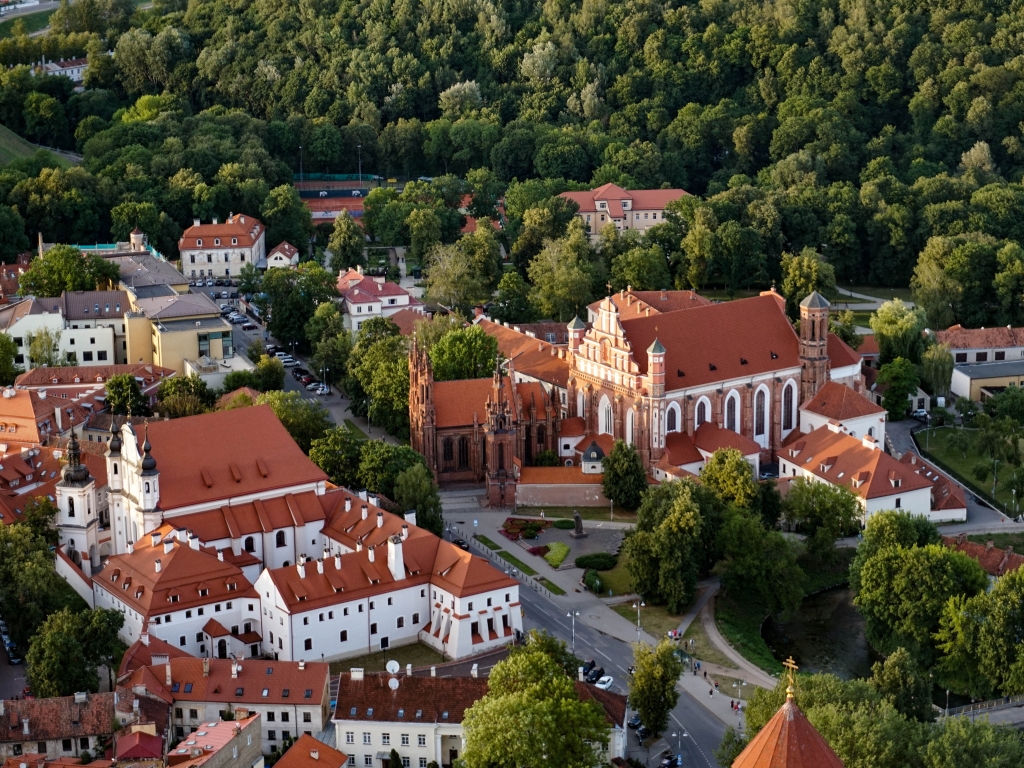Vilnius
Vilnius – the Capital City
The Old town of Vilnius is one of largest old towns in Northern Europe, included into UNESCO World Heritage list. Vilnius has the names of Little Rome, North Athens and Little Jerusalem.
Churches, museums and living houses of the Old Town were built over several centuries, creating a blend of many different architectural styles. See the iconic buildings of Vilnius: Cathedral Basilica, the most important place of the country‘s Catholics; 16th century Gates of Dawn – the main place of Pilgrims; the historic symbol of the city – Gediminas Castle; or a superb example of Flamboyant Gothic architecture – 15th century St. Anne’s Church.
Today, Vilnius has gained a reputation as a cosmopolitan, safe and friendly city.

Museums in Vilnius
Inside the tower itself find models of the castle as it was in the 14th and 18th centuries. The view on a good day is recommended. The walk to the top is a bit of a struggle for many, although there are benches thoughtfully provided along the way. Alternatively, use the funicular-type train which runs up and down the hill’s northern slope.
Understandably a must-see part of any trip to Vilnius for people wishing to understand this often bleak and violent period in the country’s history. Between 1941 and 1944 the building was controlled by the Gestapo. As a testament to the suffering endured by the ethnic Lithuanians, especially under the lunacy of Stalin, the place is a must-see for any visitor to Vilnius.
The museum also puts on temporary shows, of which some are truly outstanding. It is a vital key for unlocking the secrets of the Lithuanian people.
Enjoy a great collection of local painting, drawing and sculpture plus a couple of rooms stuffed full of exemplary furniture. All of it representing the last several hundred years of achievement. They also put on temporary exhibitions here, of which some are well worth checking out.
The collection of 5000 modern and contemporary pieces contains major Lithuanian artworks from the 1950s to this day. From October 18th, 2018 MO has become an excellent place to spend free time. MO invites visitors to attend exhibitions, film screenings, educational activities, concerts and events geared to all age groups. One of MO’s goals is to create an active community of MOdernists who support the idea of MO and want to help us create a new kind of museum – together!
The Palace of the Grand Dukes of Lithuania was originally constructed in the 15th century for the rulers of the Grand Duchy of Lithuania and the future Kings of Poland. After its demonisation in 1801, work on a new palace started in 2002 on the site of the original building and it took 16 years to complete it in 2018.
Visitors to the National Museum – Palace of the Grand Dukes of Lithuania can see both permanent and temporary exhibitions. There are four routes to choose from, which presents history and cultural heritage of the Grand Duchy of Lithuania and its rulers, the rich and important collections of archaeological artifacts and European decorative and fine arts from the Gothic to the Baroque periods as well as important materials related to Lithuanian philology.
Churches in Vilnius
Places of Interest in Vilnius
Information from: http://www.inyourpocket.com

